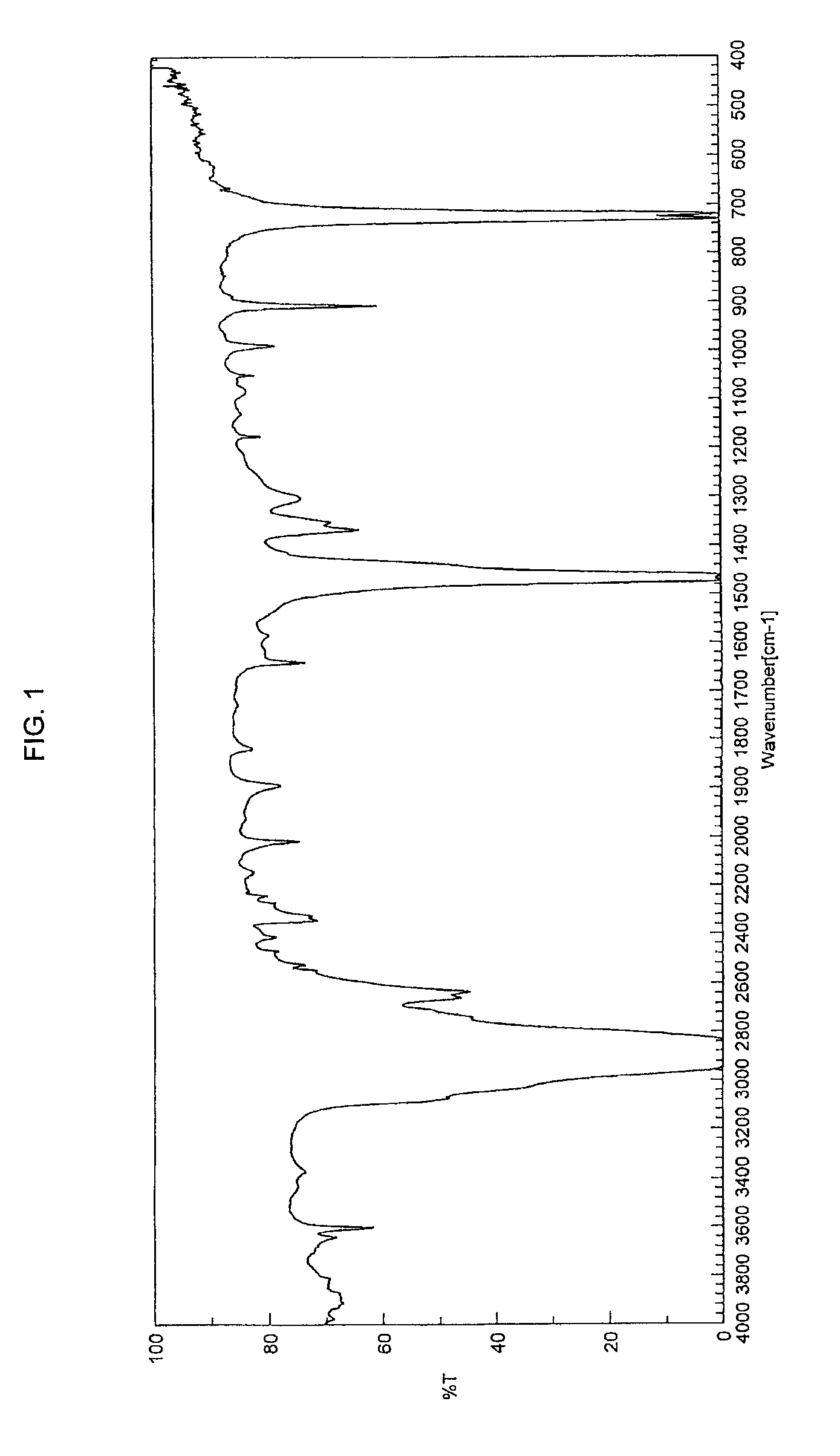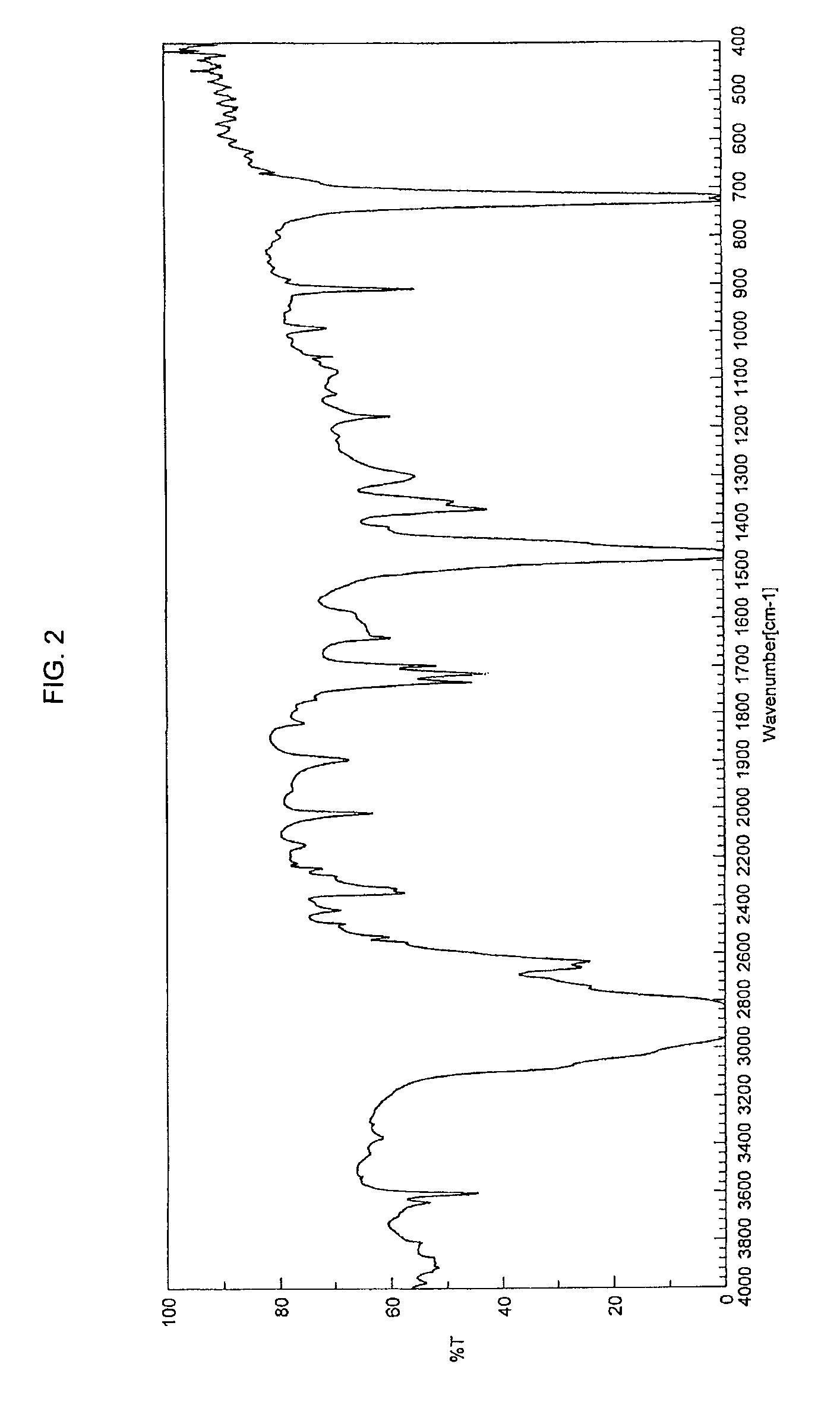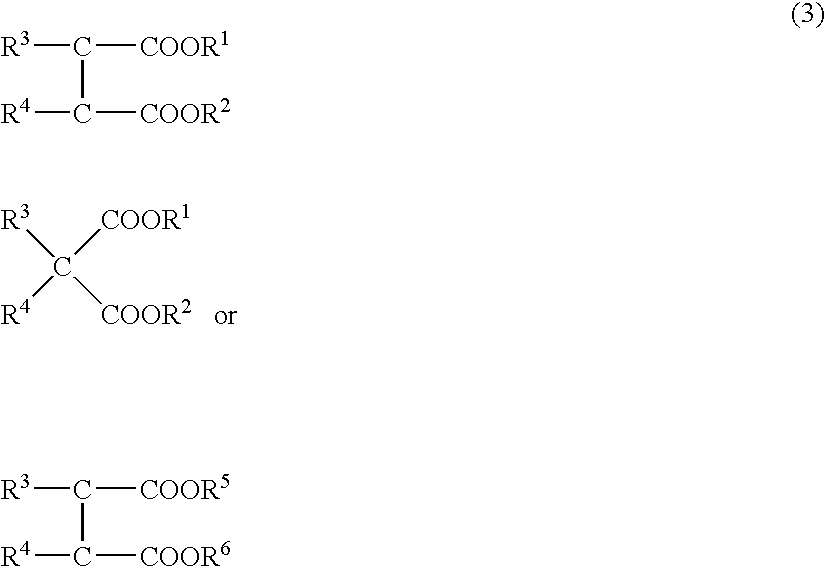Ethylene-based polymer microparticles, functional group-containing ethylene-based polymer microparticles, and catalyst carriers for manufacture thereof
a technology of ethylene-based polymer and microparticles, which is applied in the direction of synthetic resin layered products, natural mineral layered products, metal layered products, etc., can solve the problems of difficult spraying of high-molecular weight polyethylene-based resin, high sphericity, and narrow distribution of polyethylene-based microparticles, etc., to achieve the effect of high sphericity
- Summary
- Abstract
- Description
- Claims
- Application Information
AI Technical Summary
Benefits of technology
Problems solved by technology
Method used
Image
Examples
synthetic example 1
Preparation of Component (B1)
[0321]Reaction was conducted with 95.2 g (1.0 mol) of anhydrous magnesium chloride, 442 ml of decane, and 390.6 g (3.0 mol) of 2-ethylhexyl alcohol at 130° C. for 2 hours to obtain a homogeneous solution (component (B1)).
Preparation of Mg-containing Carrier Component (B1-1)
[0322]A fully nitrogen-purged flask with inner volume of 1000 ml was charged with 50 ml (50 mmol in terms of magnesium atom) of component (B1), 283 ml of purified decane, and 117 ml of chlorobenzene. While the solution was stirred at a revolution speed of 15000 rpm using a Clear Mix CLM-0.8S (Organo Corp.) and the temperature was kept at 0° C., here was added 52 mmol of triethylaluminum diluted with purified decane dropwise over 30 minutes. The temperature was gradually increased to 80° C. in 5 hours, and reaction was conducted for 1 hour. Subsequently, while the temperature was kept at 80° C., 98 mmol of triethylaluminum diluted with purified decane was again added dropwise over 30 mi...
synthetic example 2
Synthesis of Solid Catalyst Component B1-1-A2-126
[0324]A nitrogen-purged 200-ml glass reactor was charged with 63 ml of toluene, and here was added 12 ml (6 mmol in terms of Mg atom) of toluene slurry of Mg-containing carrier component (B1-1) prepared above with stirring. Then, 20.0 ml of toluene solution of transition metal compound (A2-126) below (0.00075 mmol / ml in terms of Zr atom) was added dropwise over 10 minutes, and the reaction was conducted at room temperature for 1 hour. The reaction mixture was filtered, and the solid was washed with toluene (50 ml×3) and decane (50 ml×2) and suspended in 100 ml of decane to prepare decane slurry of solid catalyst component (B1-1-A2-126). With a part of the obtained slurry of solid catalyst component (B1-1-A2-126), the concentrations were determined to be 0.000117 mmol / ml for Zr, 0.0518 mmol / ml for Mg, and 0.00726 mmol / ml for Al.
[0325]
synthetic example 3
Preparation of Solid Catalyst Component (B1-1-A2-172I)
[0326]A fully nitrogen-purged flask with inner volume of 1000 ml was charged with Mg-containing carrier component (B1-1) in an amount of 20 mmol in terms of magnesium atom and 600 ml of purified toluene. While this suspension was stirred and kept at room temperature, here was added 20 ml of toluene solution (0.0001 mmol / ml) of transition metal compound (A2-172) below dropwise over 20 minutes. After the resultant mixture was stirred for 1 hour, solid was collected by filtration, washed well with toluene, and suspended in purified decane to obtain 200 ml of decane slurry of solid catalyst component (B1-1-A2-172I).
[0327]
PUM
| Property | Measurement | Unit |
|---|---|---|
| variation coefficient of particle diameter | aaaaa | aaaaa |
| median diameter | aaaaa | aaaaa |
| median diameter | aaaaa | aaaaa |
Abstract
Description
Claims
Application Information
 Login to View More
Login to View More - R&D
- Intellectual Property
- Life Sciences
- Materials
- Tech Scout
- Unparalleled Data Quality
- Higher Quality Content
- 60% Fewer Hallucinations
Browse by: Latest US Patents, China's latest patents, Technical Efficacy Thesaurus, Application Domain, Technology Topic, Popular Technical Reports.
© 2025 PatSnap. All rights reserved.Legal|Privacy policy|Modern Slavery Act Transparency Statement|Sitemap|About US| Contact US: help@patsnap.com



